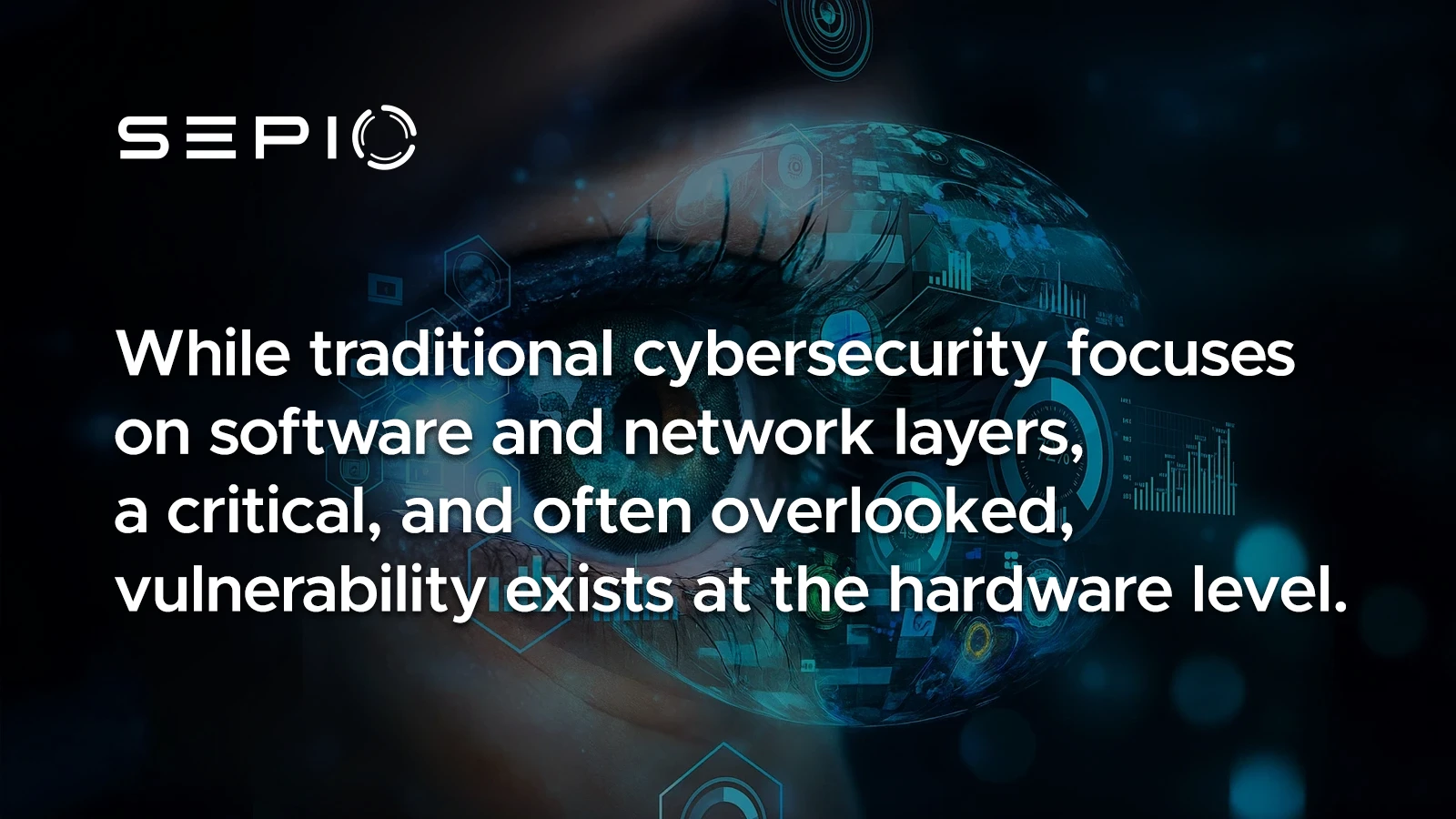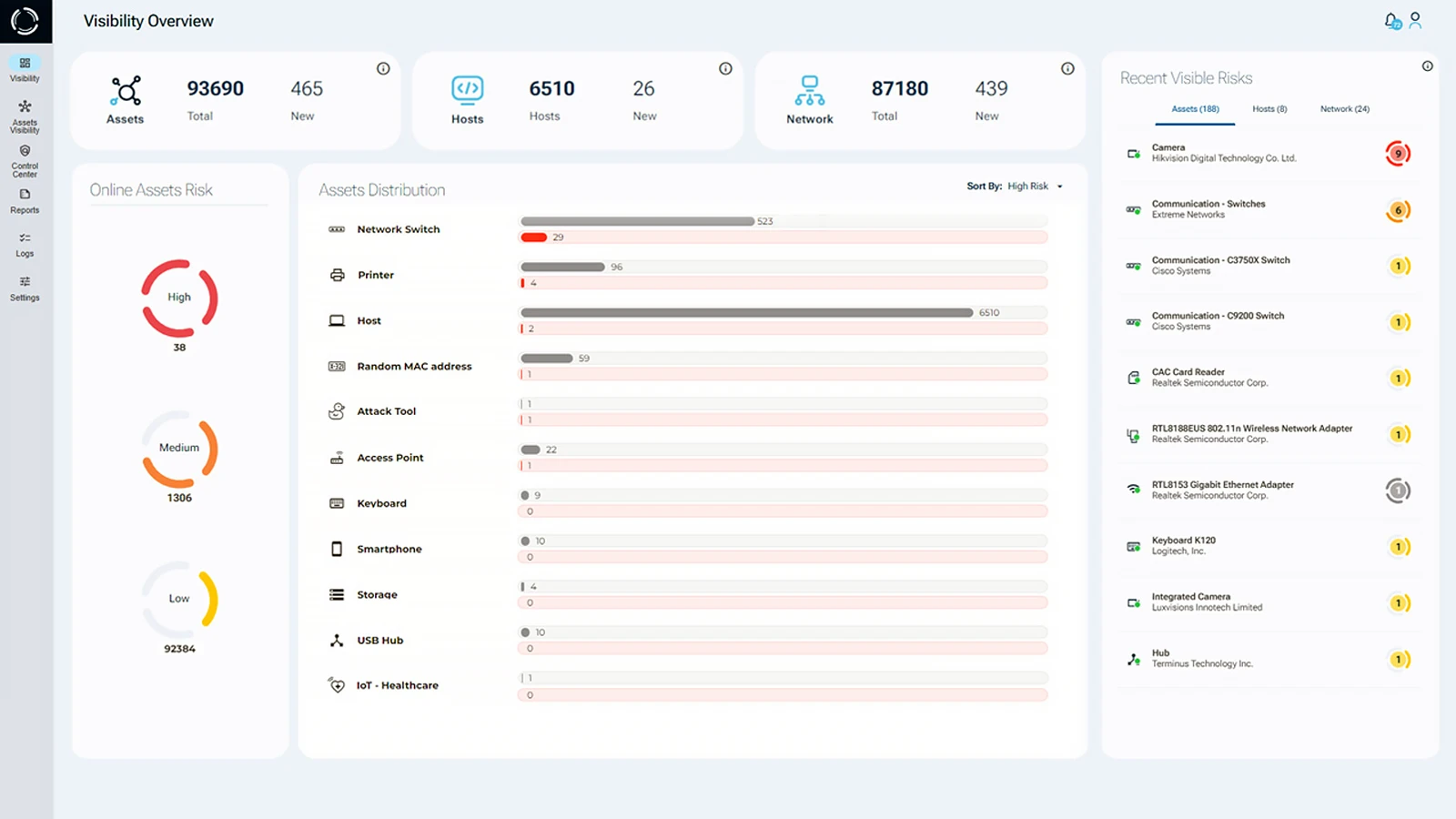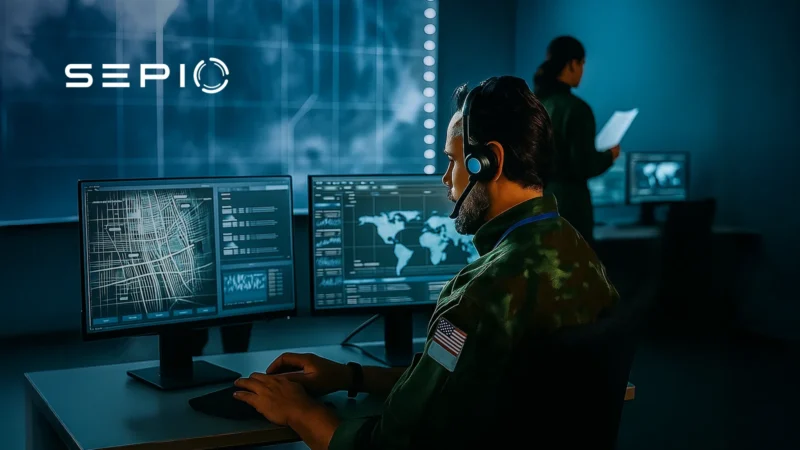Army Cybersecurity for Military IT Operations
The U.S. Army Security Operations Center (SOC) faces a complex and evolving threat landscape, tasked with protecting critical military assets and sensitive information in an increasingly connected digital world. While traditional military cybersecurity efforts often focus on software and network layers, a significant and frequently overlooked vulnerability exists at the hardware level. This makes Army hardware cybersecurity a top priority for military cyber security operations.
This white paper explores how the Sepio Platform, a leading asset visibility and risk management solution, addresses these critical hardware security gaps. It provides zero-trust visibility and control that are essential for protecting Army IT operations and keeping compliance as part of a robust Army cybersecurity strategy.
Army Cybersecurity Challenges in the U.S. Army SOC
U.S. Army SOCs, like other critical infrastructure and government entities, face a unique set of challenges that demand advanced Army cybersecurity measures:
Advanced Persistent Threats (APTs)
Government agencies and military networks are targets for sophisticated, state-sponsored APTs designed for espionage or sabotage. These threats often exploit hidden or spoofed hardware and are not detected for extended periods, presenting a significant risk to military cyber security. See Mitre for common adversary tactics.
Supply Chain Vulnerabilities
The global supply chain adds serious risks for military IT and operational systems. For example, counterfeit hardware, not authorized modifications, and embedded malicious components from original equipment manufacturers (OEMs). Furthermore, regulations like NDAA Section 889 prohibit the use of equipment from certain foreign manufacturers. Therefore, they require regular validation of hardware origin and integrity, an essential element of Army cybersecurity.
Proliferation of IT, OT, and IoT Devices
Modern military operations extensively utilize Information Technology (IT), Operational Technology (OT), and Internet of Things (IoT) devices, including Industrial IoT (IIoT). This convergence expands the attack surface, especially since many legacy OT systems lack basic Army cybersecurity controls. See CISA ICS for relevant federal guidance.
Physical Layer (Layer 1) Blind Spots
Traditional security tools, such as Network Access Control (NAC), Intrusion Detection Systems (IDS), Endpoint Protection Solutions (EPS), and IoT Network Security, operate at Layers 2 and above. They do not monitor the physical layer (Layer 1). These blind spots allow hardware attacks to bypass security protocols. This is one of the most critical gaps in Army hardware cybersecurity.
Rogue Device Exploitation
Hackers exploit Layer 1 weak spots using rogue devices, such as BadUSB (e.g., a mouse acting as a keyboard) or covert network attack tools. These devices often appear as trusted to traditional security software or have no network presence (no IP/MAC address). This makes them difficult to detect. Small, cheap devices like Raspberry Pis can be prepared to carry out bad activities without drawing attention, highlighting a key Army cybersecurity risk.
Insider Risk
Insiders, whether acting on purpose or by mistake, can introduce vulnerabilities by connecting compromised hardware. This risk is especially in Bring Your Own Device (BYOD) or remote work environments. This insider risk highlights the importance of strict Army cybersecurity controls.
Compliance Requirements
Cybersecurity frameworks such as the Cybersecurity Maturity Model Certification (CMMC) and those from the National Institute of Standards and Technology (NIST) require strict, continuous asset management. Hardware assets visibility and risk identification are critical for meeting compliance requirements and robust Army hardware cybersecurity.

The Hardware Security Platform for the U.S. Army
The Sepio Platform is a leading solution for asset visibility and risk management. Specifically, designed to protect the hardware layer, an essential yet often forgotten part of Zero Trust Architecture (ZTA). Moreover, it equips SOC teams with the tools to detect, manage, and control all connected hardware assets. As a result, this ensures no device goes unmanaged or undetected.
Physical Layer Visibility for Army Cybersecurity Operations
- Sepio is the only company in the world to undertake Physical Layer data source. It calculates a unique digital AssetDNA from the electrical properties and device descriptors of all connected peripherals and network devices.
- This capability verifies the actual identity of devices, regardless of their claimed identity or traffic patterns. It closes the fundamental “blind spot” missed by traditional security and is the only hardware zero trust solution available.
- Sepio detects network devices that do not emit traffic or network characteristics and might otherwise go unnoticed. Sepio’s visibility ensures a complete inventory of all IT, OT, and IoT assets. Delivering the foundation for Army hardware cybersecurity.
Robust Rogue Device Detection and Mitigation
- By comparing a device’s digital AssetDNA against a known set of rogue devices and using Machine Learning to analyze device behavior for abnormalities (e.g., a mouse acting as a keyboard), Sepio can automatically detect and block hardware attacks.
- Sepio’s Asset DNA, derived from electronic features, thus provides the unique ability to identify spoofed peripherals as well as hidden network implants that work without being noticed above layer 1.
- Once a rogue or threatening attack tool is detected, Sepio enforces defined policies to automatically block it, blocking not authorized access and mitigating threats in real-time.
Enhanced Zero Trust Hardware Access (ZTHA)
- Sepio integrates with and strengthens existing Zero Trust Architectures by effectively extending the “never trust, always verify” principle to the hardware level.
- Moreover, it allows security operations center teams to implement strict or granular hardware access control rules based on a device’s true features and risk score. As a result, this prevents attack tools from bypassing traditional identity based authentication or micro-segmentation controls.
Supply Chain Cybersecurity for Army Compliance
- By providing complete, real-time asset visibility, Sepio enables SOCs to identify and prevent supply chain attacks. Specifically, it detects hardware that have been changed with or contain components from prohibited manufacturers. As a result, this directly supports NDAA Section 889 compliance.
- Sepio’s asset inventory and continuous monitoring support CMMC and NIST requirements for asset management, physical protection, and system integrity. Consequently, it provides essential data for certification and ongoing compliance.
Non-Intrusive and Rapid Deployment
- Sepio does not monitor user traffic. It needs only read-only SSH access to network switches. Therefore, this makes it ideal for sensitive or operational Army IT environments.
- Sepio can be deployed agentless or in the cloud, with optional on-premise components. It provides full asset visibility within 24 hours, no baselining or allowlisting required. This allows for quick security improvements without stopping critical operations.

Benefits for the Army Cybersecurity
Implementing Sepio provides measurable benefits that strengthen U.S. Army cybersecurity, including eliminating hardware blind spots and reducing insider risk.
- Eliminates Hardware Blind Spots: Achieves 100% visibility of all hardware assets, including those invisible to traditional tools.
- Proactive Threat Mitigation: Blocks attack tools at Layer 1 before they move laterally or cause damage.
- Strengthens Supply Chain Security: Verifies hardware authenticity and integrity, supporting NDAA 889 compliance and prevents supply chain attacks.
- Enhances Compliance Posture: Supports ongoing compliance with CMMC, NIST, and DoD standards through continuous asset monitoring and control.
- Bolsters Zero Trust Architecture: Delivers foundational hardware visibility and enforcement for a secure Zero Trust model.
- Protects Critical IT/OT/IoT Infrastructure: Secures vital systems from hardware based attacks that could disrupt military operations.
- Reduces Insider Risk: Detects not authorized hardware introduced by insiders, whether by mistake or on purpose.
A Mission-Critical Approach to Army Hardware Cybersecurity
As the changing nature of warfare and cyber conflict unfolds, the U.S. Army must close all security gaps, including those at the hardware layer. However, traditional tools cannot address these challenges alone. The Sepio Platform gives the U.S. Army SOC exceptional tools for hardware cybersecurity. It offers full visibility of the physical layer and automated threat blocking, directly strengthening Army cybersecurity.
Using its proprietary Physical Layer AssetDNA and machine learning, Sepio detects hardware attack tools, and enforces Zero Trust at the hardware level. This strengthens overall cybersecurity and ensures compliance with vital regulations, supporting the U.S. Army’s cybersecurity and operational resilience.
Read the Army Cybersecurity White Paper (pdf)



